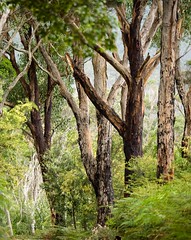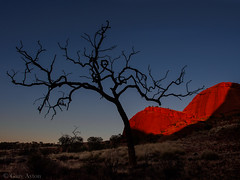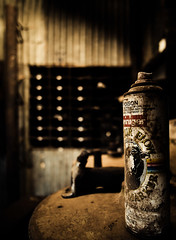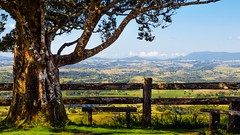In 2017, the mirrorless interchangeable cameras such as Micro Four Thirds (eg. Olympus or Panasonic – see my previous post on budget mirrorless cameras) are probably the best suited for most people in terms of size of camera and lenses, weatherproofing, image stabilisation, hand held video capabilities, versatility, image quality, more fun and value for money.
However, the most affordable versions of these tend to be too compact and lack too many features, and for those on a strict budget who need better ergonomics and can do without weathersealing and the many features that mirrorless offer (eg magnified manual focus in viewfinder, image review in viewfinder without need for reading glasses, live histograms, focus peaking, etc.), they may have to resort to entry level cropped sensor dSLRs with their cut down features.
The sad fact is that both Canon and Nikon have largely failed to offer high quality dedicated lenses for these dSLRs so that users can grow into the system without having to resort to large, heavy, expensive full frame lenses to address their growth needs. Enthusiast photographers will generally quickly migrate to more expensive full frame dSLRs to make the most of these full frame lenses – but this is a path to financial pain as well as backache, and they will not be able to use their cropped sensor lenses on these full frame cameras without having to resort to a cropped view mode.
Unlike mirrorless cameras, if you want to shoot video, you have to put the mirror up and use the rear LCD screen – you won’t be able to see anything through the viewfinder. In addition, very few lenses for dSLRs are optimised for video work – exceptions are those with stepping autofocus motors (marked as “STM” on Canon lenses).
Canon cropped sensor dSLRs can use dedicated cropped sensor lenses (“EF-S”) or larger full frame lenses (“EF”).
Nikon cropped sensor dSLRs can use dedicated cropped sensor lenses (“DX”) or larger full frame Nikon F mount lenses.
All have rather dark, cropped view Pentamirror viewfinders rather than the brighter, 100% coverage of the more expensive dSLR pentaprisms.
Canon budget dSLRs:
All have 1.6x cropped sensors, optical viewfinder with 95% image coverage, 1080HD 24/25/30p video, flash sync 1/200th sec, longest timed shutter speed of 30sec, built-in flash, scene modes including Scene Intelligent Auto, ±5 exposure compensation, 3frames AE bracketing up to ±2EV, Face Detection AF but only fast in Live View with mirror up, USB 2.0, single SD card slot, limited spread of AF points across the frame and minimal button customisations.
None have weathersealing, built-in sensor based image stabilisation or 4K video.
The older models up to and including the 700D (rebel T5i), and the smaller cheaper models all have similar outdated 18mp sensors 1st introduced with the Canon EOS 550D (rebel T2i) – ie. the sensors are old 2010 level technologies – a lot has happened since then!
The newer 24mp sensor is still not as good for high ISO and dynamic range as the Sony sensors found in Nikon, Pentax, Olympus and Sony bodies.
Canon EOS 1300D (Rebel T6):
- this is the older, 2013, basic model with 18mp sensor, Digic 4+ image processor, 9 AF points, 3″ fixed 920Kdot LCD screen, shutter to 1/4000th sec, mono mic, no mic port
- popup flash has GN of 9.2m at ISO 100
- burst rate 3fps
- AF is very slow in Live View or movie mode
- 485 g (1.07 lb / 17.11 oz)), 129 x 101 x 78 mm (5.08 x 3.98 x 3.07″)
- remote control via optional RC-6 cable or WiFi
- built-in WiFi + NFC but compatible with Eye-Fi SD cards to transfer images wirelessly
- in Jan 2017, body with basic 3x zoom kit lens will cost $AU433 after cash back from Canon
Canon EOS 100D (Rebel SL1):
- this is the compact 2016 model with 18mp sensor, Digic 5 image processor, 9 AF points, 3″ fixed 1mdot LCD touch screen, shutter to 1/4000th sec, mono mic and a mic port
- popup flash has GN of 9.4m at ISO 100
- burst rate 4fps
- basic 63 zone metering system
- AF is very slow in Live View or movie mode
- 407 g (0.90 lb / 14.36 oz), 117 x 91 x 69 mm (4.61 x 3.58 x 2.72″)
- remote control via optional RC-6 cable
- no built-in WiFi but compatible with Eye-Fi SD cards to transfer images wirelessly
- in Jan 2017, body only will cost $AU399 after cash back from Canon, perhaps a good option is the kit with the EF 40mm f/2.8 STM lens for $490 after cash back
Canon EOS 750D (Rebel T6i /Kiss X6i):
- this is the larger 2015 model with 24mp sensor, Digic 6 image processor, 19 AF all cross type points (same as 70D), 3″ articulated 1mdot LCD touch screen, shutter to 1/4000th sec, stereo mic and a mic port
- popup flash has GN of 12m at ISO 100
- burst rate 5fps
- new 7560 pixel RGB + IR metering sensor for more accurate metering
- new Hybrid CMOS AF III uses sensor-based phase detection points for increased focus speed and accuracy in live view (this is different to the Dual Pixel AF sensor found on the more expensive 70D and 7D II)
- Eye sensor for use with optical viewfinder
- Flicker detection
- 555 g (1.22 lb / 19.58 oz) / 132 x 101 x 78 mm (5.2 x 3.98 x 3.07″)
- remote control via optional RC-6 cable or smartphone via WiFi
- built-in WiFi + NFC
- issues include:
- poor subject tracking and face detection AF unless you use Live View
- limited AF point coverage across the frame (mainly just in the centre – so problematic for portraits, etc away from the centre)
- limited dynamic range
- no exposure compensation in manual mode with auto ISO
- auto ISO uses the 1/focal length as longest shutter speed to use, cannot program this
- poor battery life compared with more expensive dSLRs
- no ability to microadjust AF for each lens leading to possible inaccurate AF in all shots
- in Jan 2017, body only will cost $AU755 after cash back from Canon
Canon EOS 760D (Rebel T6s /Kiss X6s):
- as for 750D but $30 dearer and adds:
- LCD information display on top plate
- Quick control dial on rear but awkward to use for some
- Servo AF in live view, which lets you track moving subjects when shooting in live view
- competes with the Nikon D5500
Nikon budget dSLRs:
All have 1.5x cropped sensors, optical viewfinder with 95% image coverage, 1080HD 24/25/30/60p video, flash sync 1/200th sec, longest timed shutter speed of 30sec, built-in flash, ±5 exposure compensation, 3frames AE bracketing up to ±2EV, Face Detection AF but only fast in Live View with mirror up, USB 2.0, single SD card slot, limited spread of AF points across the frame and minimal button customisations.
None have weathersealing, built-in sensor based image stabilisation, PDAF in Live View, or 4K video.
Nikon D3400:
- this is the compact 2016 model with 24mp sensor, Expeed 4 image processor, 11 AF points, 3″ fixed 920Kdot LCD screen, shutter to 1/4000th sec, mono mic but no mic port and no timelapse recording
- popup flash has GN of 12m at ISO 100
- burst rate 5fps
- AF is very slow in Live View or movie mode
- battery life 3x longer than the above Canon models
- 395 g (0.87 lb / 13.93 oz) / 124 x 98 x 76 mm (4.88 x 3.86 x 2.99″)
- remote control via optional cable or smartphone via Bluetooth
- Bluetooth Snapbridge only no built-in WiFi
- in Jan 2017, body only will cost $AU535
Nikon D5500:
- this is the compact 2016 model with 24mp sensor, Expeed 4 image processor, 39 AF points incl. 9 cross-type, 3.2″ articulated 1mdot LCD touch screen, shutter to 1/4000th sec, stereo mic, mic port
- popup flash has GN of 12m at ISO 100
- 17 mm eyepoint
- burst rate 5fps
- Multi-CAM 4800DX autofocus sensor module with TTL phase detection
- 3D color matrix metering II (type G, E, and D lenses)
- 3D subject tracking
- no anti-alias filter and thus can give marginally more image detail than the above Canon models
- no AE bracketing
- AF is very slow in Live View or movie mode
- battery life 2x longer than the above Canon models
- Optional GP-1/GP-1A GPS module
- 465 g (1.03 lb / 16.40 oz) / 124 x 97 x 70 mm (4.88 x 3.82 x 2.76″)
- remote control via optional MC-DC2 cable or WiFi via WR-1/WR-R10
- Wifi
- in Jan 2017, body only will cost $AU825
Nikon D5600:
- as for D5500 but $70 dearer, half the battery life, AE bracketing, Bluetooth, NFC, timelapse recording, exposure metering using 2016-pixel RGB sensor
Conclusion:
The Nikon dSLRs have better sensors than the Canon in terms of dynamic range and perhaps more detail without the anti-alias filter, plus they have better subject tracking, better battery life and the video mode can capture 60 frames per second not just 24/25/30p.
The Canon dSLRs with sensor-based phase detection points have better Live View AF and all the Canons can use a much wider range of legacy lenses (eg. you can adapt a Nikon lens in manual focus only onto a Canon dSLR but you cannot use a Canon lens on a Nikon dSLR due to its long sensor to lens mount distance).
There are more expensive versions of these dSLRs which add weathersealing and improved autofocus as well as pentaprisms instead of the dark pentamirrors, but then, you probably would be better off buying a mirrorless camera such as an Olympus OM-D E-M1 or Panasonic GX85/80.










